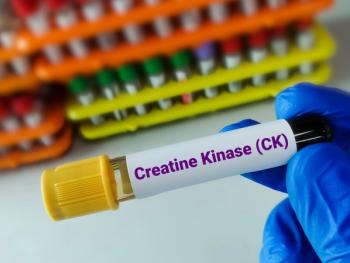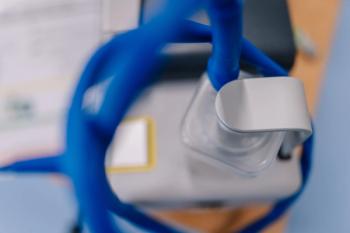
Gene Therapy Elevidys Slows Motor Decline In Boys With Duchenne, Phase 3 Trial Shows
Developed by Sarepta Therapeutics, Elevidys is a one-time, intravenous treatment that uses adeno-associated virus (AAV) technology to deliver a gene designed to produce a shortened form of the dystrophin protein, known as Elevidys micro-dystrophin, directly to skeletal muscle.
Boys aged 8 to 9 with Duchenne muscular dystrophy (DMD) who received the gene therapy Elevidys (delandistrogene moxeparvovec-rokl) showed significant improvements in motor function compared to untreated patients with the disease, suggesting the therapy could slow DMD’s progression during a stage when physical decline is typically expected, according to findings from the
According to the Muscular Dystrophy Association, DMD is the most common type of muscular dystrophy, affecting approximately 1 in every 5,000 live male births.
DMD is a serious genetic disorder that causes progressive muscle weakness and deterioration, especially in the skeletal muscles that control movement.
An estimated 20,000 children worldwide are diagnosed with DMD each year.
This condition mainly affects males, as the DMD gene is located on the X chromosome.
However, some females who carry the gene may also experience symptoms.
In recent trials, the gene therapy Elevidys has offered new hope for those living with DMD.
Developed by Sarepta Therapeutics, Elevidys is a one-time, intravenous treatment that uses adeno-associated virus (AAV) technology to deliver a gene designed to produce a shortened form of the dystrophin protein, known as Elevidys micro-dystrophin, directly to skeletal muscle.
The therapy is approved for patients aged 4 and older with a confirmed mutation in the DMD gene, both those who can walk and those who cannot. For non-ambulatory patients, the approval is accelerated and depends on ongoing clinical trial results.
In the first part of this trial—which was
In this new phase,
Researchers evaluated the safety and efficacy of Elevidys in boys between ages 4 and 8 globally with DMD. Participants in the placebo group were given the opportunity to receive the therapy at the start of the second year.
One year after treatment with Elevidys, boys with DMD showed meaningful improvements compared to an external control group.
Key functional outcomes included a 4.75-point gain on the North Star Ambulatory Assessment (NSAA) a 6.87-second faster time-to-rise from the floor and a 4.76-second faster 10-meter walk/run.
The NSAA is a 17-item rating scale used to measure functional motor abilities in patients with DMD.
In a separate EMBARK analysis using muscle MRI, 39 boys (19 treated, 20 placebo) showed those receiving Elevidys had less fat buildup and muscle damage.
Improvements were seen in 4 out of 5 muscle groups, while placebo patients showed worsening.
Aravindhan Veerapandiyan, M.D., associate professor of pediatrics at the University of Arkansas for Medical Sciences and Arkansas Children’s Hospital, said in a press release that what stands out from the trial is that “these patients were treated at an age when motor decline is typically expected in those with Duchenne. Yet, those who received Elevidys demonstrated statistically significant and clinically meaningful functional improvements compared to external controls.”
The success of this study results in the advanced, noninvasive MRI techniques to track early muscle changes in boys with DMD, showing consistent treatment benefits across muscle regions.
However, the small sample size and short 52-week follow-up limited statistical power.
An MRI in young children also presents technical challenges, researchers suggest.
Researchers recommend confirming these results in larger, longer trials.
Overall, the findings support Elevidys as a potential treatment to slow disease progression and help preserve muscle function and ambulation.
Newsletter
Get the latest industry news, event updates, and more from Managed healthcare Executive.





















































